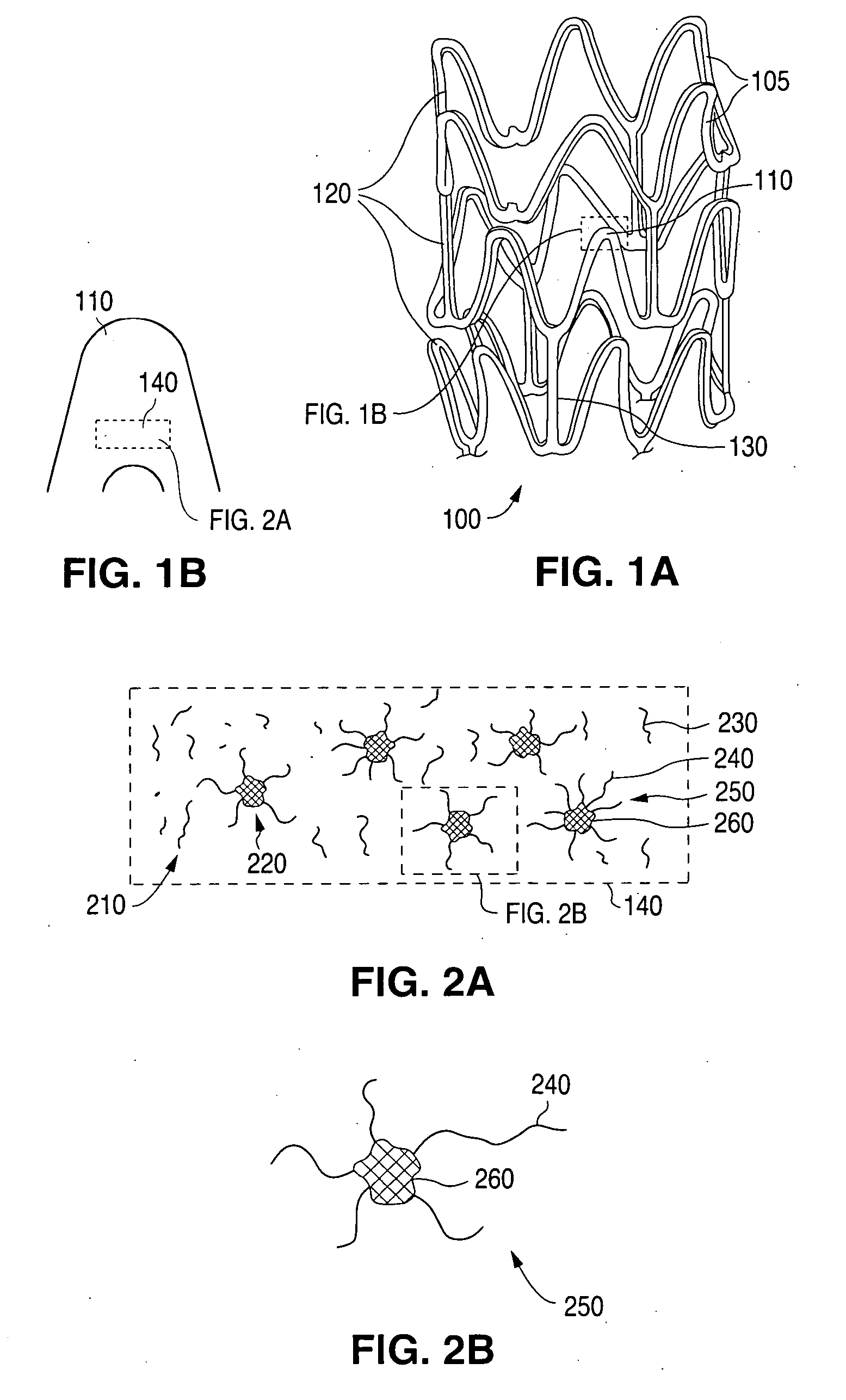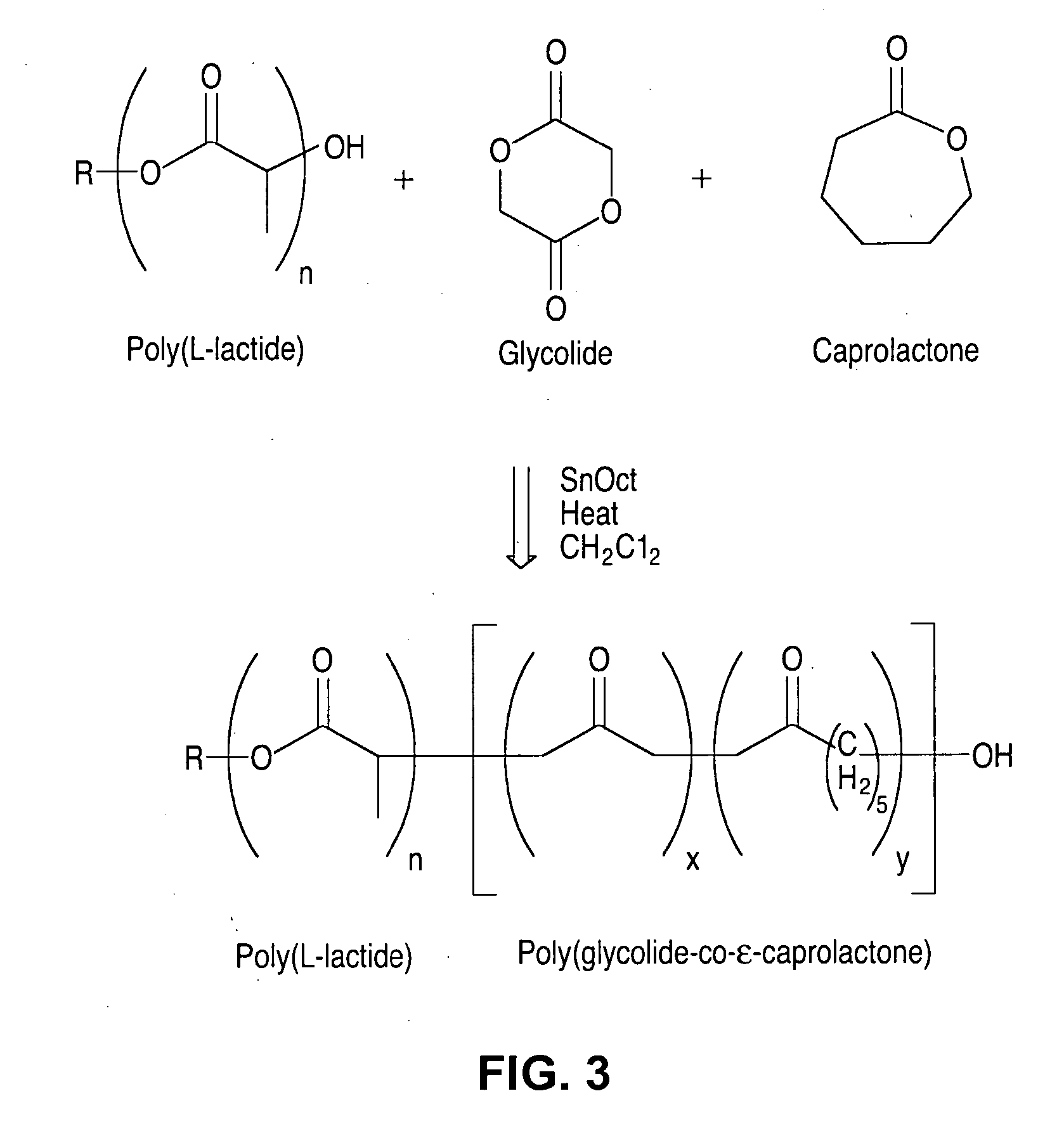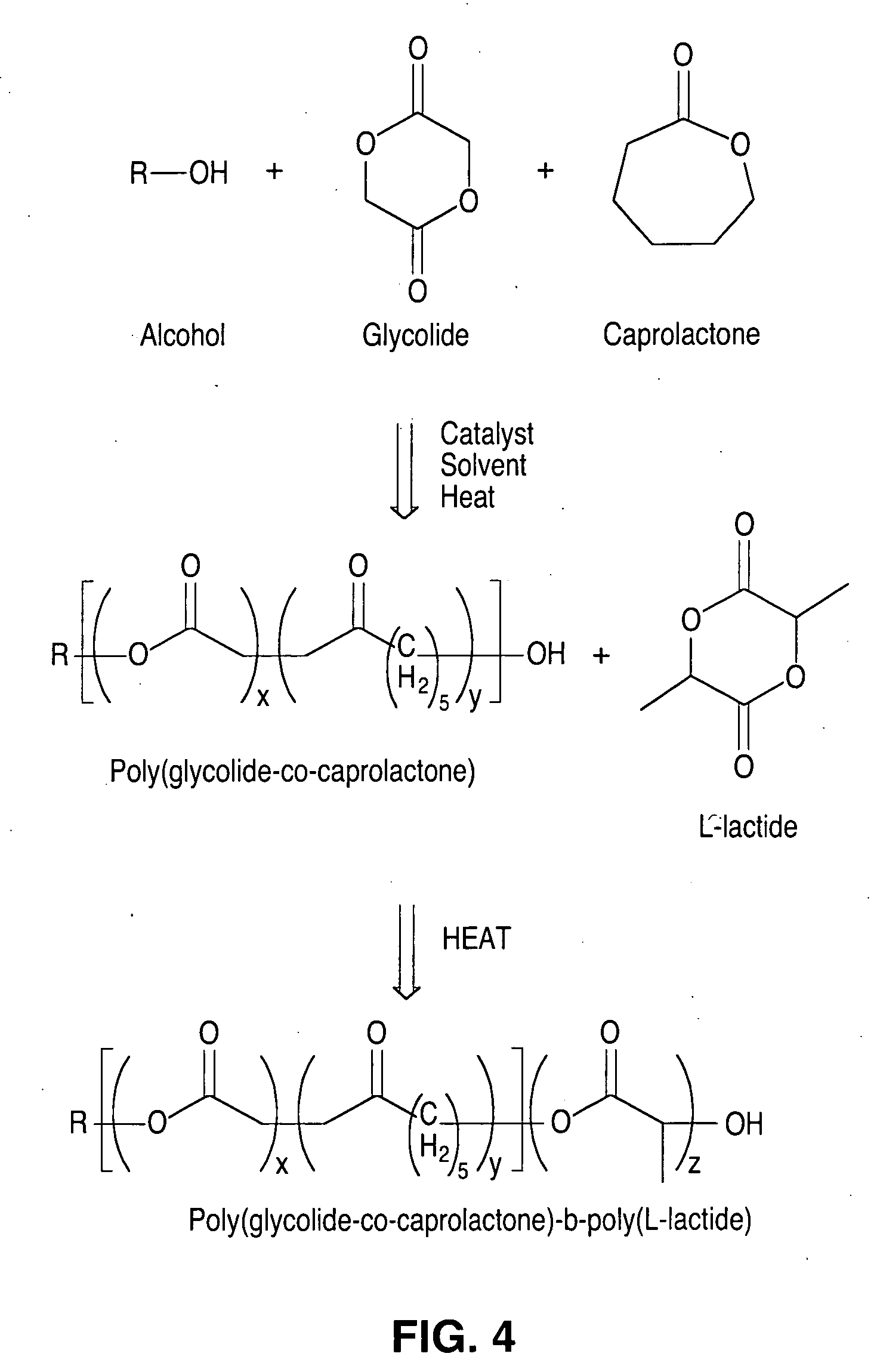Degradable polymeric implantable medical devices with a continuous phase and discrete phase
a medical device and polymer technology, applied in the field of degradable polymeric implantable medical devices, can solve the problems of reducing the service life of the stent,
- Summary
- Abstract
- Description
- Claims
- Application Information
AI Technical Summary
Problems solved by technology
Method used
Image
Examples
example 1
[0084] Poly(glycolide-co-ε-caprolactone)-b-poly(L-lactide)copolymer was synthesized by forming the poly(glycolide-co-caprolactone) segments first. Then, poly(glycolide-co-caprolactone) is used to initiate polymerization of L-lactide. FIG. 3 illustrates the synthesis of poly(glycolide-co-ε-caprolactone)-b-poly(L-lactide)copolymer according to this embodiment. FIG. 3 shows that glycolide and caprolactone monomers were combined in the presence of an alcohol initiator, catalyst, and solvent to form poly(glycolide-co-caprolactone). L-lactide was then added to the mixture to form the poly(glycolide-co-ε-caprolactone)-b-poly(L-lactide)copolymer.
[0085] Chloroform, toluene, xylene, or cyclohexane can be used as the solvent. The reactants can be dissolved in the solvent during the early stages of polymerization. The solvent can be removed at higher temperature to increase polymerization rate. Initiators can include dodecanol and ethanol.
[0086] Catalysts can include stannous octoate and / or s...
example 1a
[0088] The following steps describe a polymerization procedure that was used to form poly(glycolide-co-ε-caprolactone)-b-poly(L-lactide) with a target molecular weight of 150 g / mole:
[0089] Step 1: A 2-L reaction kettle equipped with mechanical stirring was placed in a glove box which was filled with high purity nitrogen. The reaction kettle was preheated to remove moisture.
[0090] Step 2: 100 g GA, 100 g CL, 0.44 mL dodecanol, 200 ml xylene and 0.56 mL stannous. octoate were added to the reaction kettle, the GA being added in 4 portions in two-hour intervals. The mixture was stirred at 120° C. for 53 hours.
[0091] Step 3: 100 g LLA was then added into reaction kettle and the reaction continued for another 68 hours.
[0092] Step 4: 1.5L CHCl3 was then added to reaction kettle to dilute the final product. The reaction mixture was poured into 4-L methanol upon which the product precipitated. Then, the product was dried in vacuum at 80° C. until constant weight.
example 1b
[0093] At the end of Step 2 in Example 1a, a small amount sample was taken out of the reaction kettle, and Nuclear Magnetic Resonance (“NMR”), Differential Scanning Calorimeter, and tensile testing was performed. Neither GA nor CL monomer peaks were found in the H-NMR, which proved that both GA and CL monomers had been consumed to form PGA-co-PCL discrete phase copolymer after a 53-hour reaction. (1H-NMR of the end product of Step 3 in Example 2a showed that more than 98% LLA monomer had been consumed to form the pure poly(L-lactide) block on the poly(glycolide-co-ε-caprolactone)-b-poly(L-lactide)copolymer. The formed poly(glycolide-co-caprolactone) discrete phase copolymer was a rubbery material with a relatively low Young's modules of 6.7 KSi and glass transition temperatures at −20° C. and 30° C.
PUM
| Property | Measurement | Unit |
|---|---|---|
| wt % | aaaaa | aaaaa |
| glass transition temperatures | aaaaa | aaaaa |
| glass transition temperatures | aaaaa | aaaaa |
Abstract
Description
Claims
Application Information
 Login to View More
Login to View More - Generate Ideas
- Intellectual Property
- Life Sciences
- Materials
- Tech Scout
- Unparalleled Data Quality
- Higher Quality Content
- 60% Fewer Hallucinations
Browse by: Latest US Patents, China's latest patents, Technical Efficacy Thesaurus, Application Domain, Technology Topic, Popular Technical Reports.
© 2025 PatSnap. All rights reserved.Legal|Privacy policy|Modern Slavery Act Transparency Statement|Sitemap|About US| Contact US: help@patsnap.com



